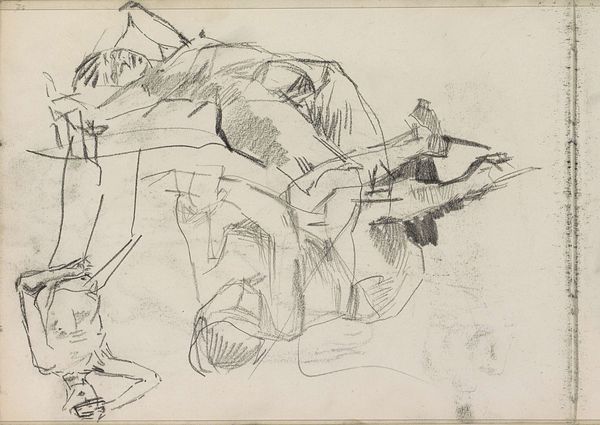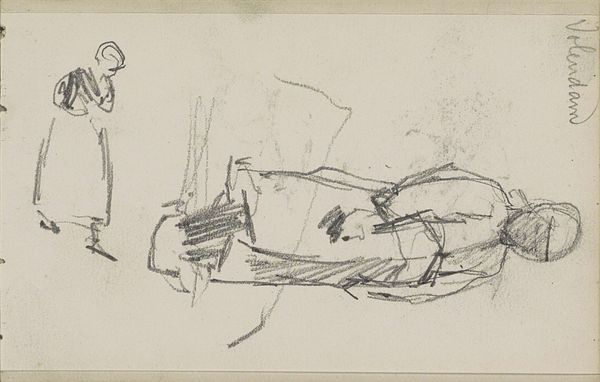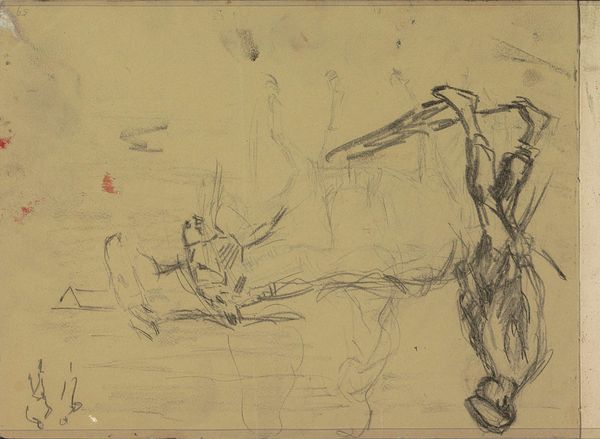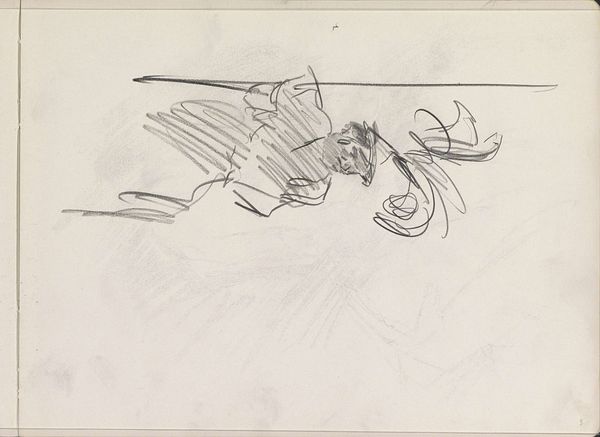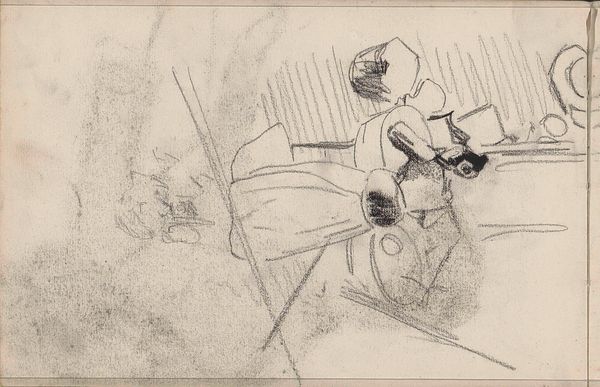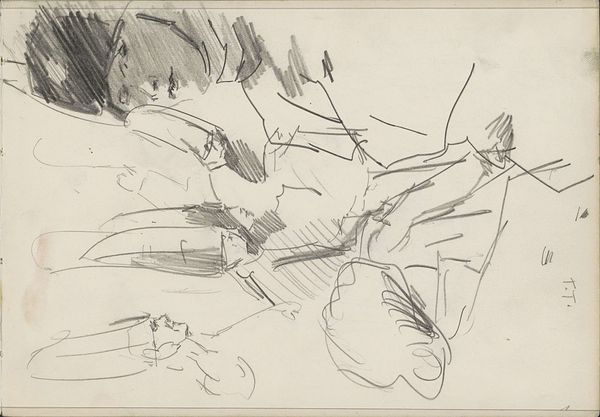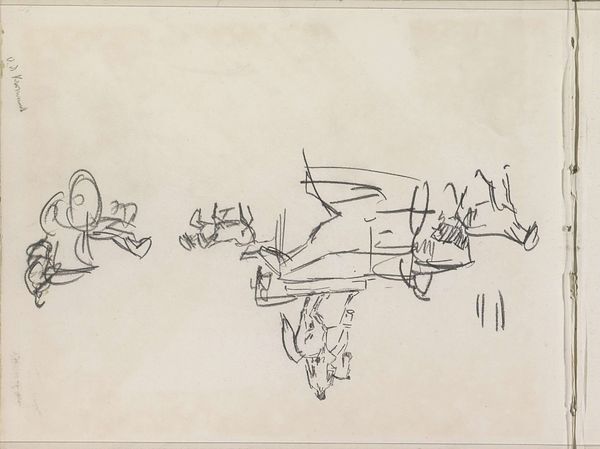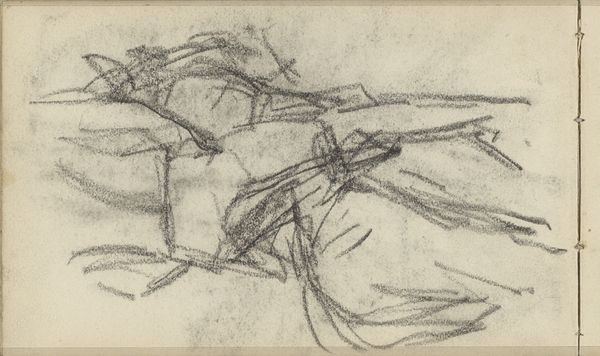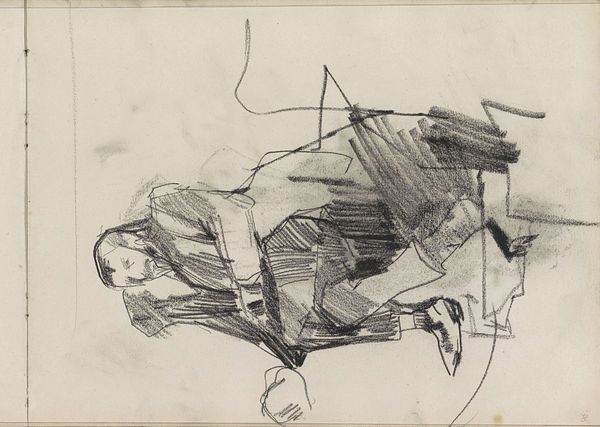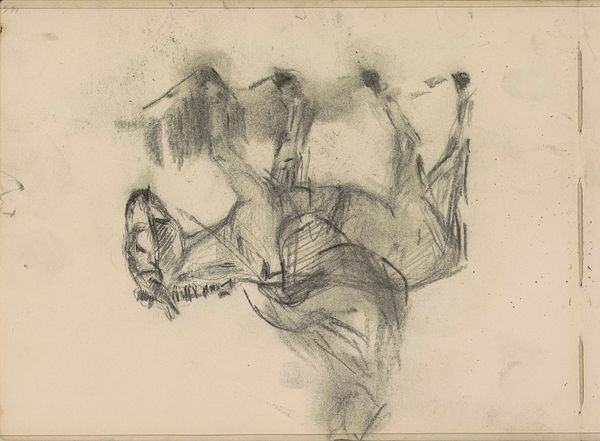
Copyright: Rijks Museum: Open Domain
Editor: Here we have Isaac Israels' "Man on a chair and a standing woman," made between 1892 and 1900. It's a pencil drawing. What strikes me most is how raw and immediate the sketch feels. What do you see in this piece? Curator: I see a record of labor, both the labor depicted – what appears to be figures at work – and the labor of the artist, Israels, himself. The visible pencil strokes, the tentative lines – these aren’t just aesthetic choices; they’re evidence of the means of production. Consider the paper, too. Was this a costly paper stock or something readily available, perhaps even scrap? Its material value shapes our understanding of the drawing’s purpose and intended audience. Editor: That’s interesting. I hadn’t thought about the paper itself being significant. So, you’re saying the choice of materials influences how we perceive the image? Curator: Precisely. Israels' Impressionistic style, characterized by loose lines and fleeting moments, wasn’t just about capturing a visual impression. It was also a means of rapid production, aligning art-making with the speed of industrializing society. How does the use of a simple material like pencil shift our understanding of Israels' intention in capturing a scene? Editor: Hmm… maybe he was more interested in documenting everyday life, rather than creating something precious and formal. It challenges the traditional idea of ‘high art’ somehow. Curator: Exactly. Think about the consumption of images at that time. Was this sketch intended for sale, reproduction, or merely as a study? The answer influences how we understand Israels’ role within the art market and his relationship to his subjects. Editor: So, by looking at the materials and process, we can understand the broader social and economic context of the artwork. I never thought about art in quite that way before. Curator: Indeed. The physicality of art always reflects the social forces that shaped its creation.
Comments
No comments
Be the first to comment and join the conversation on the ultimate creative platform.
